The Vivo X60 Pro 5G (Snapdragon) is the EU version of the mobile phone, which differs from the China-exclusive Exynos version in terms of chipset among other characteristics.
The EU model features the Snapdragon 870 chipset with 12 GB RAM and 256 GB storage, runs Android 11, and boasts a 4200 mAh battery with 33W flash charging. The display is a large 6.56-inch FHD+ AMOLED with a 120 Hz refresh rate.
For selfies, both the EU and China models use the same front camera module. There’s a 32 MP sensor coupled with an f/2.45 aperture lens. Video is also captured at full HD 1080p at 30 fps resolution.
Let’s see how the Vivo X60 Pro 5G (Snapdragon) performed in our DXOMARK Selfie tests.
Key front camera specifications:
- 32 MP sensor, f/2.45 aperture lens
- 1080p/30fps video
- Qualcomm Snapdragon 870 chipset
About DXOMARK Camera tests: For scoring and analysis in our smartphone camera reviews, DXOMARK engineers capture and evaluate over 3000 test images and more than 2.5 hours of video both in controlled lab environments and in natural indoor and outdoor scenes, using the camera’s default settings. This article is designed to highlight the most important results of our testing. For more information about the DXOMARK Camera test protocol, click here. More details on how we score smartphone cameras are available here.
Test summary
Scoring
Sub-scores and attributes included in the calculations of the global score.
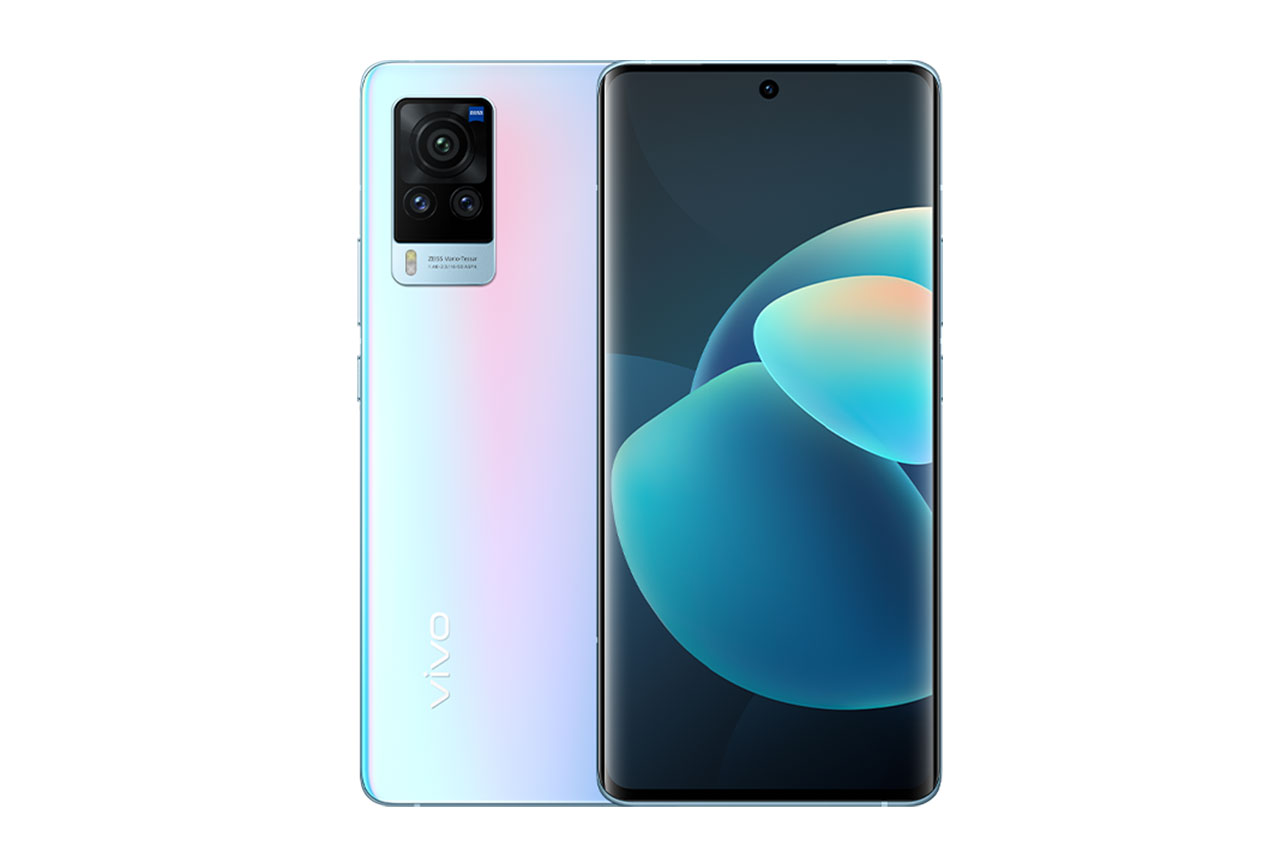
Vivo X60 Pro 5G (Snapdragon)


 57th
57th 14th
14thPros
- Dynamic range is fairly extended in photo
- Photo color rendering is accurate indoors and outdoors
- Noise is well-controlled on outdoor photos
- Details are well preserved on faces in outdoor photos
- Generally accurate and stable video target exposure
- Video detail is well preserved indoors and outdoors
- A slightly warm but pleasant color in outdoor videos
Cons
- Limited depth of field in photos
- Noise and low detail in low light photos
- Color quantization, halo, anamorphosis and blue edging artifacts are sometimes visible in photos
- Face deformation and residual motion video stabilization problems in all lighting conditions
- Limited dynamic range in most videos
- Low skin tone saturation in videos
- Visible noise in low light videos
With a score of 91, the Vivo X60 Pro 5G (Snapdragon) offers a notable improvement over its predecessor the Vivo X51 5G. Strengths include reliable and accurate target (face) exposure in all scenarios and pleasant color rendering in outdoor and indoor selfies.
The fixed-focus lens also delivers good sharpness on faces in the 30 to 55cm range, and overall noise and texture are well-controlled in outdoor shots.
In challenging conditions, however, the Vivo X60 Pro 5G (Snapdragon) slightly underperformed against the top-ranked devices in our premium segment of smartphones priced between $600 and $799. Slight exposure instabilities are visible on indoor shots, and in low light, white balance inconsistencies, unnatural skin-tone rendering, visible noise, and low detail are all evident.
Photo
The Vivo X60 Pro 5G (Snapdragon) achieves a Selfie Photo score of 94. In this section, we take a closer look at each sub-attribute and compare image quality against competitors.

Exposure and Contrast
Vivo X60 Pro 5G (Snapdragon)
83
91
In these tests, we analyze target exposure, contrast, and dynamic range, including repeatability across a series of images. Tests are undertaken in a wide range of light conditions, including backlit scenes and low light down to 1 lux. The score is derived from a number of objective measurements in the lab and perceptual analysis of real-life images.
Exposure instabilities are visible across consecutive shots. These samples show a slight difference in background exposure.

Color
Vivo X60 Pro 5G (Snapdragon)
92
105
In these tests, we analyze color rendering, skin tones, white balance, and color shading, including repeatability across a series of images. The score is derived from a number of objective measurements in the lab and perceptual analysis of real-life images.
This sample shows the Vivo X60 Pro 5G (Snapdragons)’s color rendering in an outdoor scene.
These samples show the Vivo X60 Pro 5G (Snapdragon)’s color performance in low-light conditions.

Focus
Vivo X60 Pro 5G (Snapdragon)
62
97
In these tests, we analyze autofocus accuracy and shooting time, including repeatability, in the lab. We test focus failures, depth of field, and tracking of moving subjects using perceptual analysis of real-life images.
These samples show the limited depth-of-field capabilities of the Vivo X60 Pro 5G (Snapdragon)’s fixed-focus lens.
While sharpness is good in the lens’s optimal focus range of 30-55cm, faces toward the back of a group selfie are out of focus.

Texture
Vivo X60 Pro 5G (Snapdragon)
65
85
In these tests, we analyze texture on faces and objects, including objects in motion, in a range of light conditions, using several lab test setups and perceptual analysis of real-life images.
These samples show the Vivo X60 Pro 5G (Snapdragon)’s texture performance in the lab at a light level of 1000 lux.

Noise
Vivo X60 Pro 5G (Snapdragon)
66
90
In these tests, we analyze noise on faces and objects, including objects in motion, in a range of light conditions, using several lab test setups and perceptual analysis of real-life images.
These samples show the Vivo X60 Pro 5G (Snapdragon)’s performance in the lab at a light level of 10 lux where the Samsung Galaxy S21 Ultra 5G (Snapdragon) reference device is able to hold on to more fine detail.
When using the X60 Pro’s bokeh mode,bokeh blur strength (aperture value) is adjustable. However, the default value is f/16 (not an aperture typically used to induce a strong bokeh effect), and manufacturer defaults are the baseline we use largely to test. So by default, the Vivo’s portrait mode is not a true bokeh mode, but more of a skin softening and beautification mode that also allows you to adjust a bokeh effect.
In the two samples below you can see that there is virtually no difference in terms of background blur between a standard photo and an image captured in selfie portrait mode. However, a difference is clearly visible on the skin of the subject, which is much smoother in the portrait image.
For comparison here is the same shot from a couple of competing devices. As you can see, at default settings the background blur is much stronger on the Samsung and Xiaomi devices.
The lack of background blur at default settings on the Vivo leads to a lower score in our bokeh category than some competitors. However, compared to previous Vivo devices with similar settings, the X60 Pro 5G’s bokeh mode still represents an improvement in terms of noise, artifacts and other elements that are not strictly dependent on the strength or weakness of the bokeh blur effect.

Artifacts
Vivo X60 Pro 5G (Snapdragon)
81
92
In these tests, we check images for optical artifacts such as vignetting, flare, lens softness in the corners, distortion, and chromatic aberrations, as well as for processing artifacts such as ghosting and fusion errors, hue shift, and ringing.
This sample shows that color quantization artifacts are sometimes visible on the Vivo X60 Pro 5G (Snapdragon).
Video
In our Video tests, we analyze the same image quality attributes as for still images, such as exposure, color, texture or noise, but we also include such temporal aspects as speed, and smoothness and stability of exposure, white balance, and autofocus transitions.
NOTE: The sample video clips in this section are best viewed at 1080p resolution.
The Vivo X60 Pro 5G (Snapdragon) achieves a Selfie Video score of 85. A device’s overall Video score is derived from its performance and results across a range of attributes in the same way as the Photo score. In this section, we take a closer look at these sub-scores and compare video image quality against competitors.

Exposure and Contrast
Vivo X60 Pro 5G (Snapdragon)
67
86
These video samples show the Vivo X60 Pro 5G (Snapdragon)’s video exposure performance in a high contrast scene.

Color
Vivo X60 Pro 5G (Snapdragon)
78
87
These video samples show the Vivo X60 Pro 5G (Snapdragon)’s video color performance in an outdoor scene.

Focus
Vivo X60 Pro 5G (Snapdragon)
84
92
These video samples show the Vivo X60 Pro 5G (Snapdragon)’s video focus performance in a group selfie shot in the lab.

Texture
Vivo X60 Pro 5G (Snapdragon)
85
97
Texture preservation in video is good, but slightly surpassed by the other devices in this comparison.
This graph shows the Vivo X60 Pro 5G (Snapdragon)’s video texture performance under different lighting conditions in the lab.

Noise
Vivo X60 Pro 5G (Snapdragon)
65
83
This graph shows the Vivo X60 Pro 5G (Snapdragon)’s video noise performance under different lighting conditions in the lab.

Artifacts
Vivo X60 Pro 5G (Snapdragon)
82
92
For video artifacts, we check for the same kinds of artifacts mentioned in the Photo section, along with such video-specific artifacts as frame rate variation in different light conditions, judder effect, and moving artifacts (artifacts such as aliasing, color quantization, and flare can often be more intrusive when moving than in a still image).
This graph shows the Vivo X60 Pro 5G (Snapdragon)’s video frame rate under different lighting conditions in the lab.

Stabilization
Vivo X60 Pro 5G (Snapdragon)
50
82
In these tests, we analyze residual motion when handholding the camera during recording, as well as when walking and running with the camera. We also look for stabilization artifacts such as jello effect, sharpness differences between frames, and frame shift (abrupt changes of framing).
These sample clips show the Vivo X60 Pro 5G (Snapdragon)’s video stabilization in outdoor conditions.


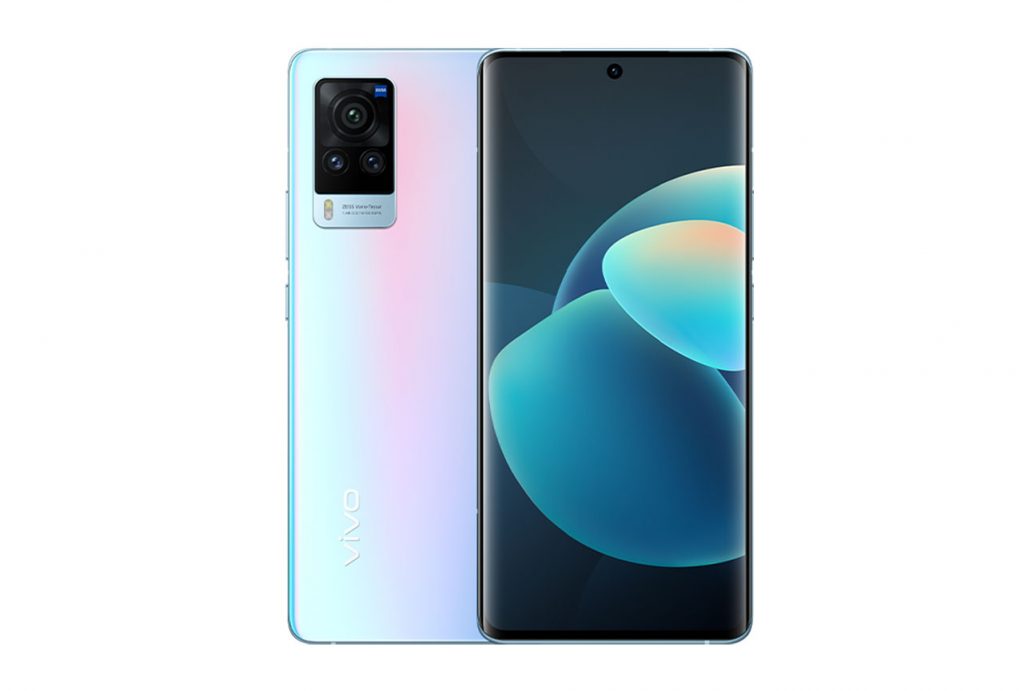

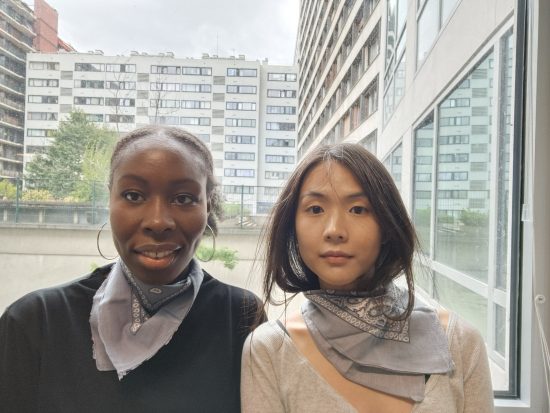
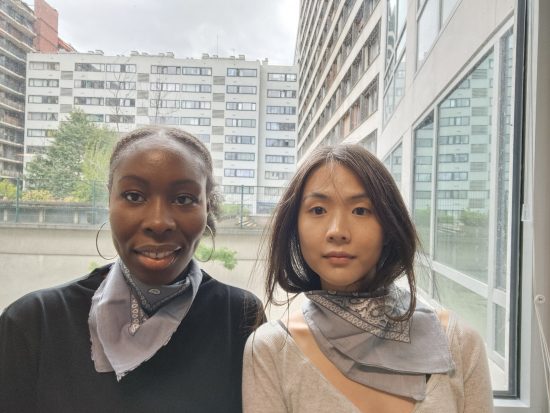
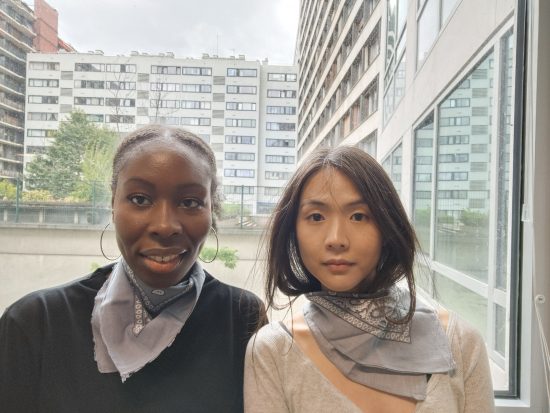
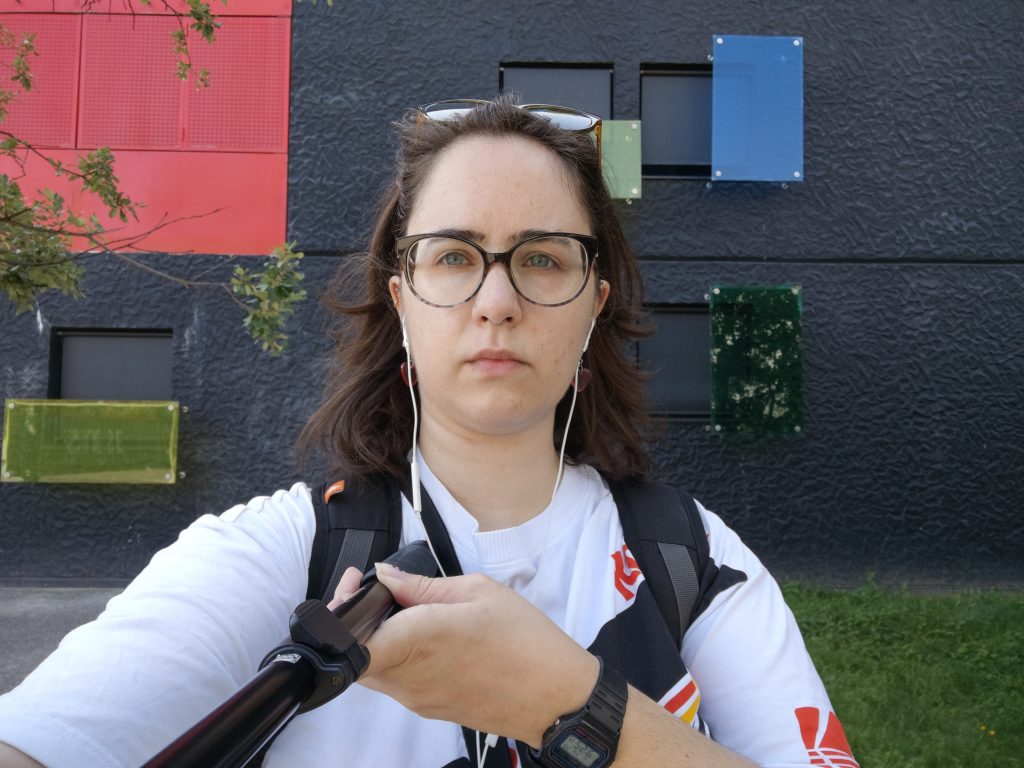



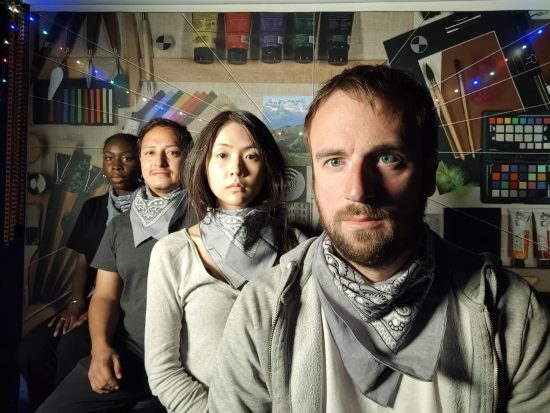
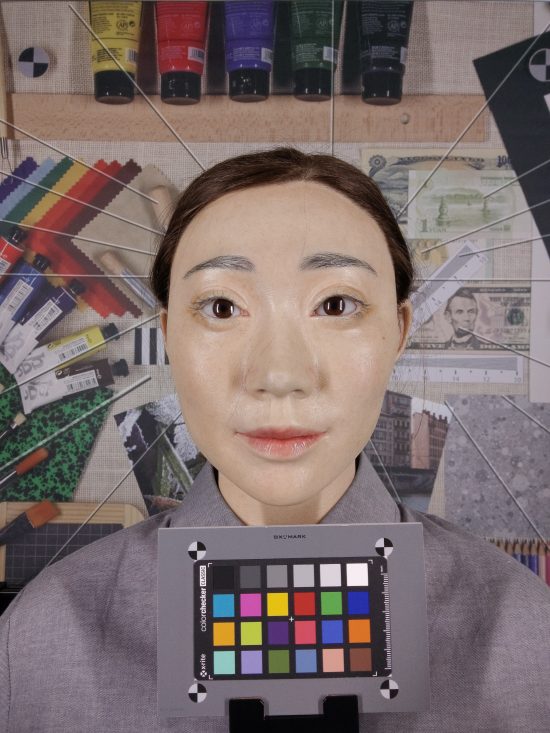
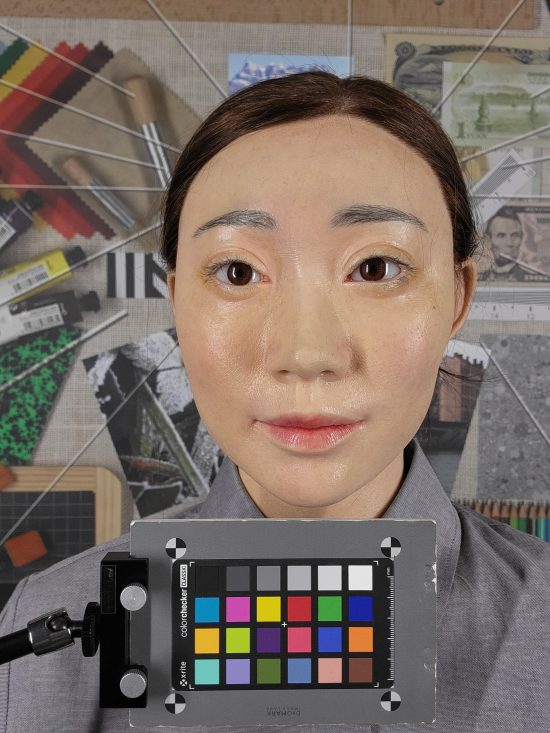
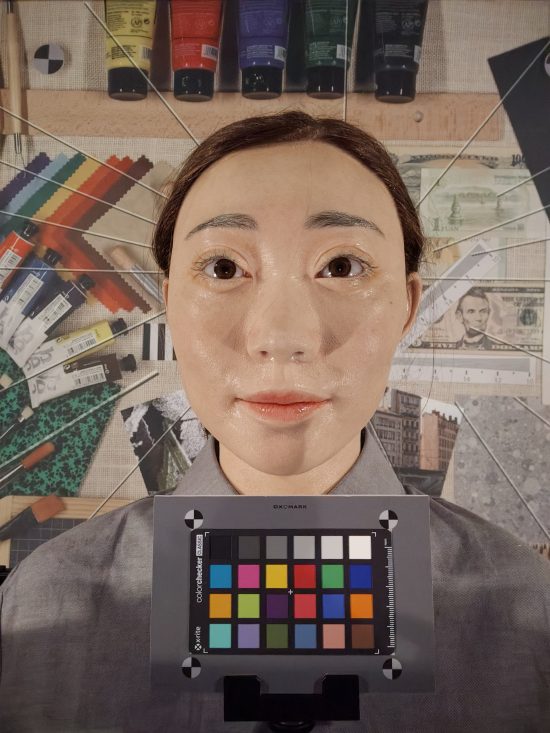
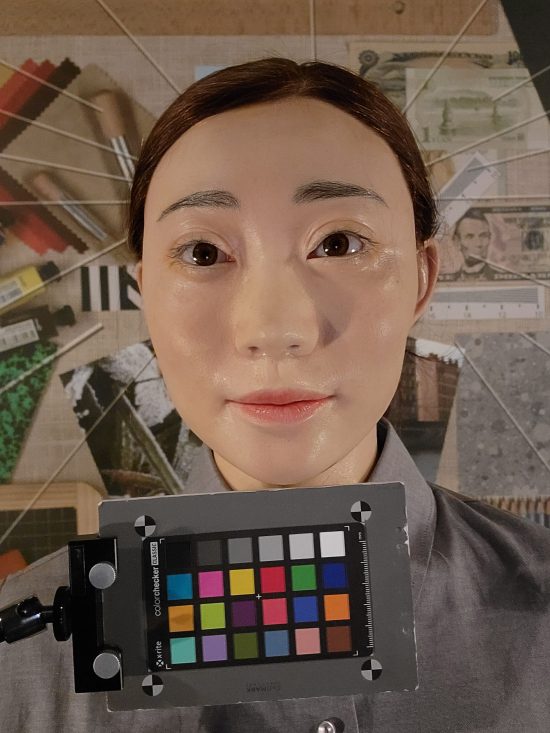

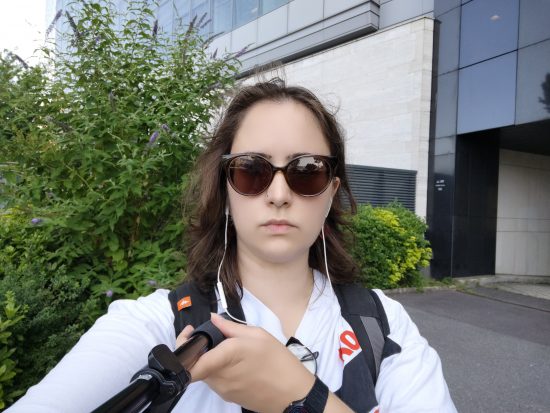
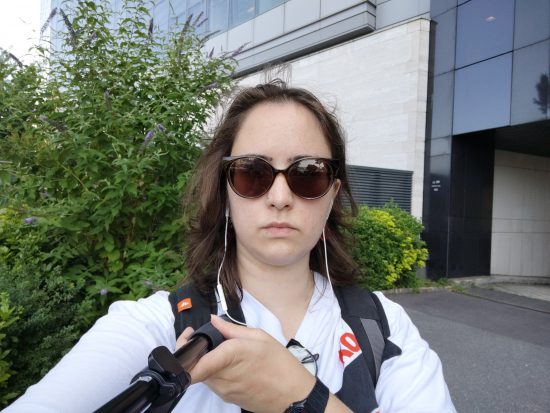
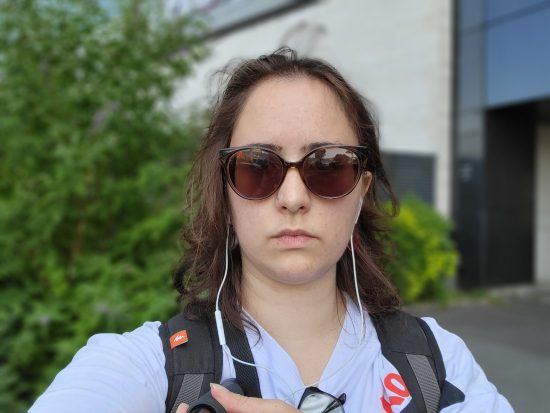
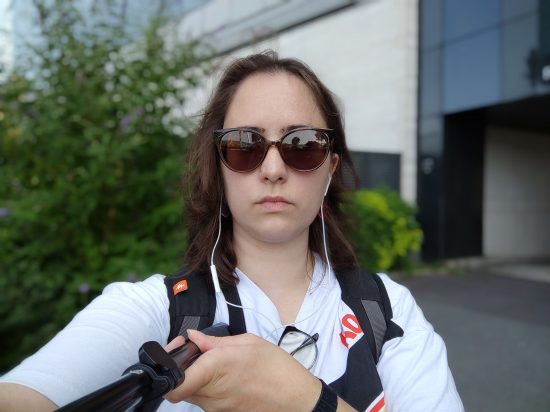
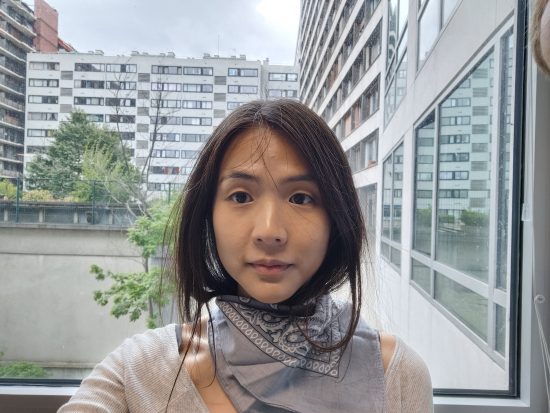
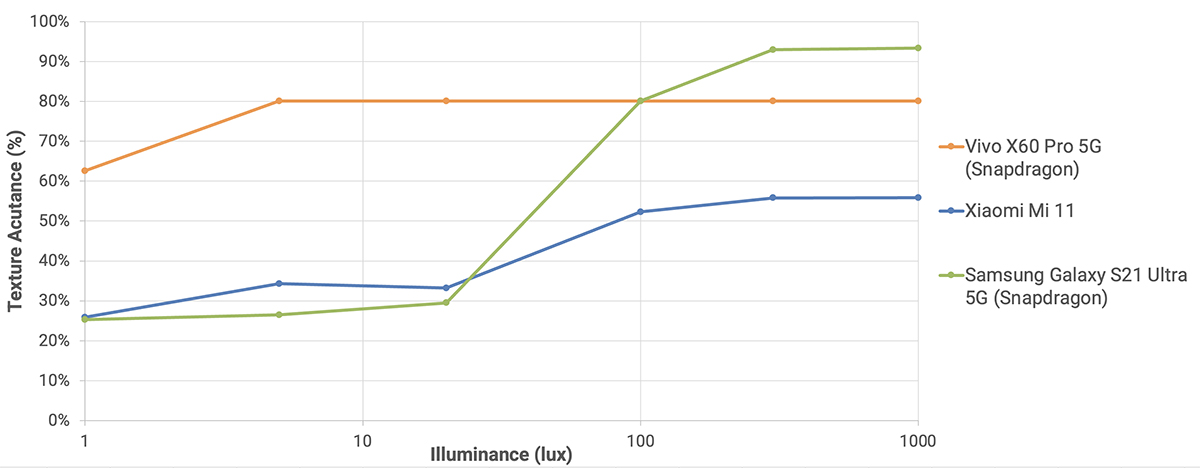
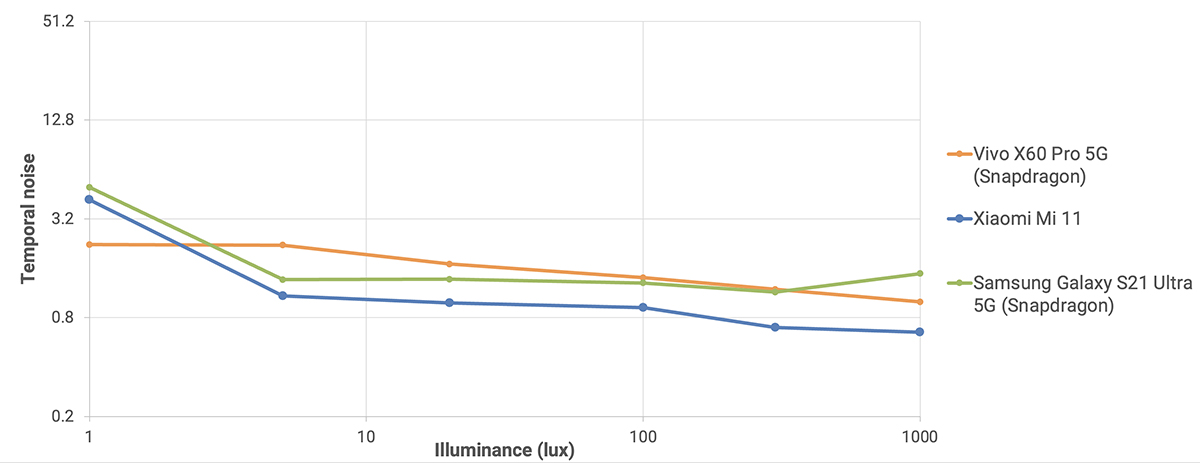
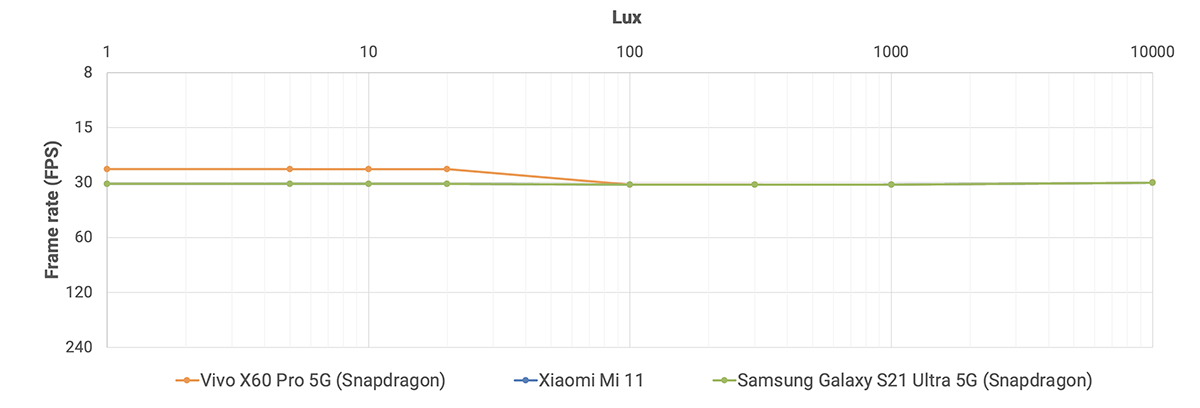
DXOMARK encourages its readers to share comments on the articles. To read or post comments, Disqus cookies are required. Change your Cookies Preferences and read more about our Comment Policy.